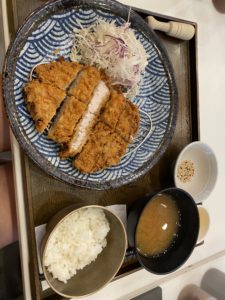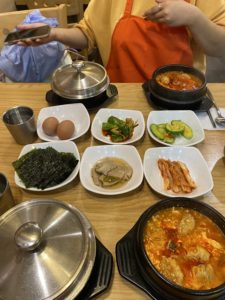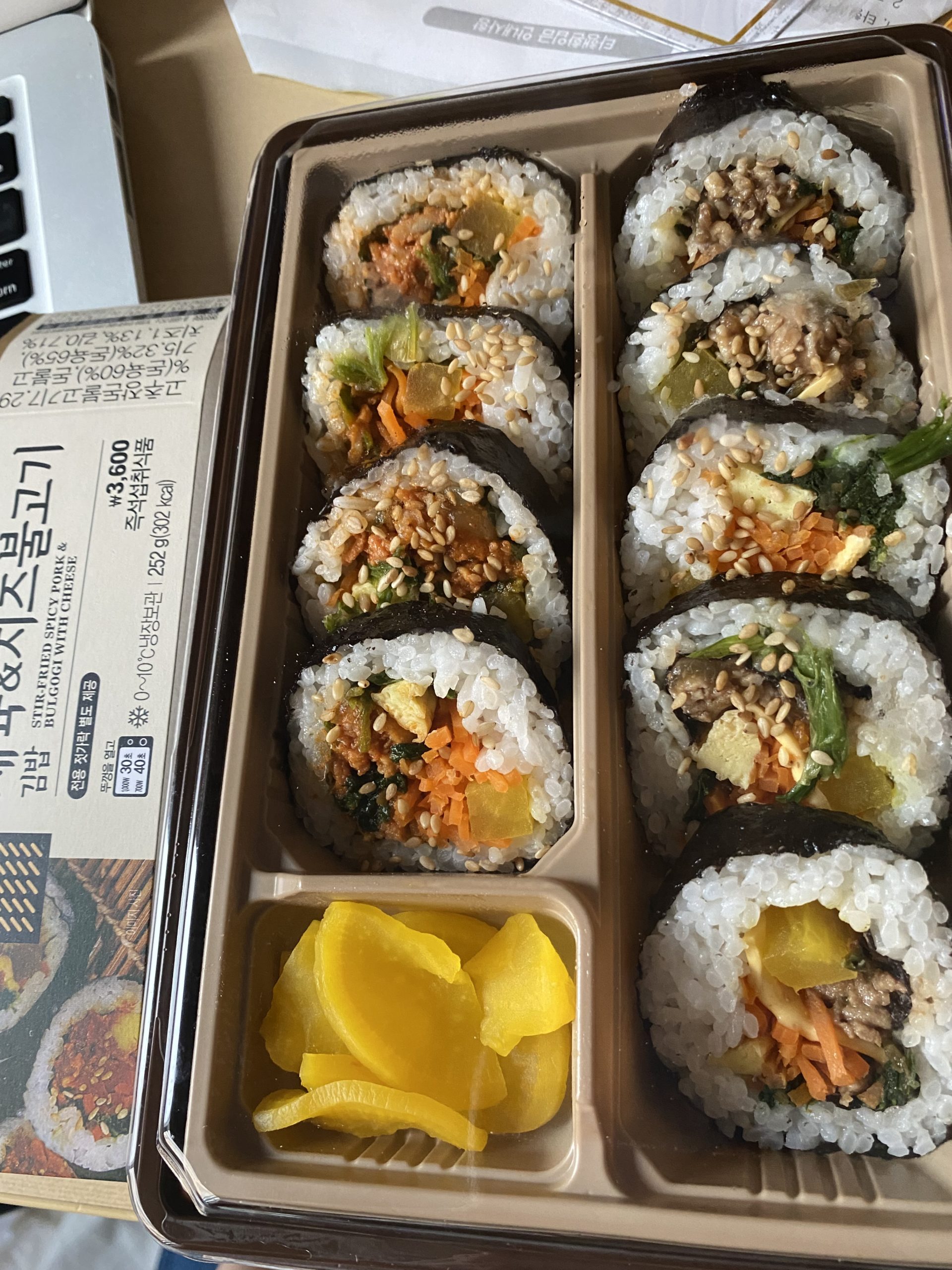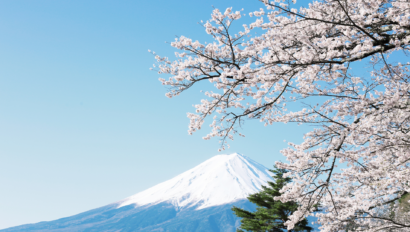Note on featured image: Here’s some surprisingly photogenic kimbap (김밥) from a local convenience store. Convenience store kimbap is not just a food, it’s a way of life. When no other restaurants are open, the 24-hour convenience stores are a mecca for everyone looking for a midnight snack. Critically, this is not “just Korean sushi;” Japanese sushi is most often prepared with seafood, especially raw, whereas Korean kimbap usually has cooked ingredients like cooked tuna & mayo, bulgogi beef, kimchi, and vegetables.
By far my most common answer to the question “what are you most looking forward to in Korea?” has been the chance to experience authentic Korean food! I have loved Korean cuisine for a very long time, and incorporating it into my daily cooking in Boston brought such wonderful flavors into my kitchen.
In fact, I’m so interested in the cuisine that I found a way to take an anthropology course on “Korean Food & Culture” during my time at Yonsei. I’ve already learned so much from my professor, even just about anthropology in general, since I have never had the chance to explore the field before during my time at Northeastern. Another way that studying abroad is broadening my horizons!
So far, we have mainly discussed the three basic macronutrients (carbohydrates, fats, and proteins). Despite that, my professor has had no shortage of historically relevant articles and foods to recommend us. The course is heavily discussion-based (as are all of my courses at Yonsei), so we are encouraged to connect our personal experiences and cultural relationships with food to the material we’re discussing.
All this aside, food has already been, and will continue to be, an extraordinarily significant part of my time abroad. Instead of just hoping to sprinkle all of my favorite dishes into my articles successfully, I thought I would instead make a monthly food-themed article! Bite-size (haha) info about restaurants, dishes, and culture surrounding food in Seoul will be found in these.
With that in mind, here is my first installment:
First, I find it important to mention that taking pictures of your meals is much more popular and socially acceptable in Seoul than it is in the US. I have always taken lots of photos of my meals (restaurant-purchased, home-cooked, and otherwise), and sometimes my friends would playfully tease me for doing so. When out with foreign and Korean friends alike in Seoul, it’s almost natural to push our bowls together and document our dishes in delight. I couldn’t find too much information on the internet about this phenomenon, aside from this article by Mabel Kwong, an Asian-Australian freelance writer. As I am not of Asian heritage, I’ll leave you to her piece to discuss potential reasons for the development of this pocket of Asian culture.
Now, without further ado, some food!:
 Set Menus: This picture shows my first meal out of quarantine in Seoul! The restaurant was called Cochon Tonkatsu, and it has an interesting selling point that I haven’t seen in the States: there is only one meal you can order, and it costs 3000 Korean won (about US$2.55). For this price, you get a piece of crispy fried pork cutlet called tonkatsu (돈까스), cabbage salad, miso soup, and a bowl of rice. You grind the small bowl of sesame seeds, then mix in the thick tonkatsu sauce to give it a richer flavor. There are more than one of these “set menu” restaurants; in fact, the article I link out to shows the local 4000 won (~$3.35) kimchi set joint and the 5000 won (~$4.20) beef bulgogi set place. I don’t want to imply that these meals are the beacon of nutritious eating, but they certainly fill me up and feel like food that was cooked with care.
Set Menus: This picture shows my first meal out of quarantine in Seoul! The restaurant was called Cochon Tonkatsu, and it has an interesting selling point that I haven’t seen in the States: there is only one meal you can order, and it costs 3000 Korean won (about US$2.55). For this price, you get a piece of crispy fried pork cutlet called tonkatsu (돈까스), cabbage salad, miso soup, and a bowl of rice. You grind the small bowl of sesame seeds, then mix in the thick tonkatsu sauce to give it a richer flavor. There are more than one of these “set menu” restaurants; in fact, the article I link out to shows the local 4000 won (~$3.35) kimchi set joint and the 5000 won (~$4.20) beef bulgogi set place. I don’t want to imply that these meals are the beacon of nutritious eating, but they certainly fill me up and feel like food that was cooked with care.
 Banchan (반찬): Banchan is the name for the side dishes (other than cooked rice) that come with a meal in Korean cuisine. Whenever you go to a sit-down restaurant in Korea, you’ll order a dish, and the next thing you know, your table will be overflowing with little plates of banchan. Some historians theorize that banchan may have been a part of Korean cuisine since as early as 57 BCE. Kimchi (김치), likely the most internationally recognized of these dishes, is of course extremely popular. Kimchi is also a perfect example of a common characteristic of banchan: Many side dishes are often fermented/pickled in some way. Fermentation was the best way to keep the agricultural products that Korea produced edible for longer periods of time; kimchi allowed people to eat vegetables even in the dead of winter!
Banchan (반찬): Banchan is the name for the side dishes (other than cooked rice) that come with a meal in Korean cuisine. Whenever you go to a sit-down restaurant in Korea, you’ll order a dish, and the next thing you know, your table will be overflowing with little plates of banchan. Some historians theorize that banchan may have been a part of Korean cuisine since as early as 57 BCE. Kimchi (김치), likely the most internationally recognized of these dishes, is of course extremely popular. Kimchi is also a perfect example of a common characteristic of banchan: Many side dishes are often fermented/pickled in some way. Fermentation was the best way to keep the agricultural products that Korea produced edible for longer periods of time; kimchi allowed people to eat vegetables even in the dead of winter!
In this photo, my roommate and I are eating sundubu jjigae (순두부찌개, spicy soft tofu stew) at Dolkkae Maeul Millstone Soft Tofu in Hapjeong. The darker colored things floating in mine are beef mandu (만두), or Korean dumplings. And in the center of the table, you can see five banchan dishes! Going counterclockwise from the bottom left, there are dried seaweed sheets (김), marinated mushrooms, cabbage kimchi, stir-fried & marinated zucchini (호박볶음), and cucumber kimchi (오이 김치, my favorite!). The raw eggs are not considered to be part of the banchan; they are there to be cracked into our soup when it’s boiling hot! Not only is this absolutely delicious, but it also helps tone down the spice & temperature of the soup a bit.
 Tteokbokki (떡볶이): An article about popular Korean foods wouldn’t be complete without a mention of tteokbokki, or spicy stir-fried rice cakes. I have run into these guys at countless street food stalls and restaurants alike. The bright red sauce comes from the addition of spicy gochujang (고추장, red chili paste), though it has a slightly sweet taste to it as well. Eggs, scallions, vienna sausages, cheese, and fishcakes are popular additional toppings/mix-ins. I’m actually not an enormous fan of this dish myself, but they’re so iconic that they definitely deserve a spot on my list.
Tteokbokki (떡볶이): An article about popular Korean foods wouldn’t be complete without a mention of tteokbokki, or spicy stir-fried rice cakes. I have run into these guys at countless street food stalls and restaurants alike. The bright red sauce comes from the addition of spicy gochujang (고추장, red chili paste), though it has a slightly sweet taste to it as well. Eggs, scallions, vienna sausages, cheese, and fishcakes are popular additional toppings/mix-ins. I’m actually not an enormous fan of this dish myself, but they’re so iconic that they definitely deserve a spot on my list.
An alternative version that I did enjoy was “rose tteokbokki,” pictured here from 앙떡로제떡볶이 홍대점. Rose/rosé sauce is the name for mixing tomato sauce with heavy cream and/or cream sauce (hence resulting in a “rosy pink” color). For me, the addition of cream lightened the flavor!
That’s all the food I have space for today! I hope this is a fun look into the most exciting part of my everyday life in South Korea. I’ll make sure to keep trying new things and bringing them to our blog!










